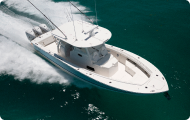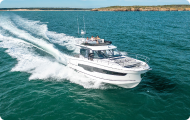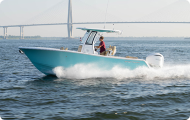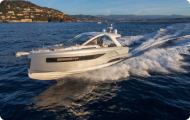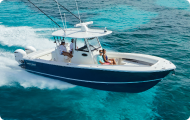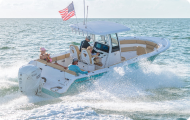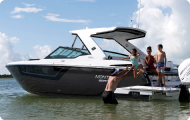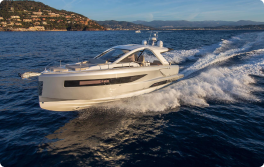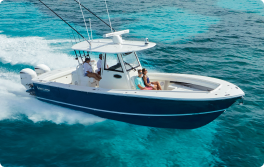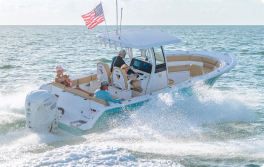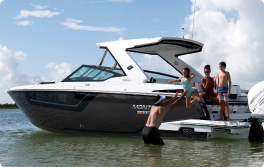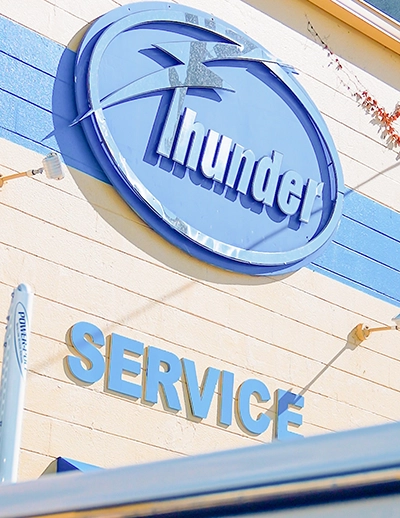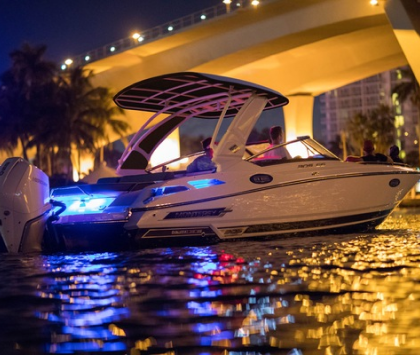Every day, thousands of boaters head to the water to fish, enjoy water sports, and relish in one of the greatest activities there is…boating. But, before you boat, you need to fuel up. Here are a few myths, facts, and solutions related to Ethanol Fuel in Boats.
Fueling up a boat before hitting the water happens at retail gas stations for 95% of boaters according to a recent release from BoatUS. Due to recent changes by the federal government’s Renewable Fuel Standard (RFS), risk of misfuelling marine engines is on the rise. Here’s one reason why. The federal ethanol mandates require increasing amounts of biofuels—including corn ethanol—to be blended into the US fuel supply every year, such as E15 fuel. The approval of E15 fuel is putting boaters who fuel up at retail locations at risk because biofuels ARE NOT recommended for use in boats of any kind. One mistake at the gas pump can be a source of expensive, warranty voiding repairs and dangerous engine failure. Here are a few things to keep in mind the next time you hit the pumps.
E0 vs E10 vs E15 and how it affects your marine engine:
Three of the most common types of gasoline currently found on the market are E0, E10, and E15. The “E” stands for Ethanol and the number represents the percentage of ethanol in unleaded gas.
E0 is 0% Ethanol and 100% unleaded gasoline.
E10 is 10% Ethanol and 90% unleaded gasoline.
E15 is 15% Ethanol and 85% unleaded gasoline.
For marine engines, gas with 10% ethanol or less is recommended. Ethanol fuel in boat motors can put a quick damper on your weekend plans. One of the unfortunate characteristics of ethanol is that it attracts and absorbs water. Gasoline with ethanol can absorb roughly 10 times as much water and still burn through the engine. However, when water comes in contact with ethanol blended fuel, the fuel and water can separate to form distinct layers in your tank. The upper “gasoline” layer will be depleted of ethanol and have a reduced octane level. The lower “phase separation” layer will be a corrosive mix of water and ethanol and no chemical agent or fuel additive can be added to E10 gasoline, in a reasonable quantity, that will fully prevent phase separation or recombine a phase-separated layer. An engine won’t run on the water-soaked, highly corrosive ethanol solution that sinks to the bottom of the tank.
What to look for at the pumps:
Marine refueling stations are your best options for ensuring you’re getting the proper fuel for your boat and reducing the risk of damages caused from ethanol fuel in your boat engine. If you choose to refuel on the way to the lake, be sure to check the pump first. In the state of Missouri, there is not a requirement for ethanol labeling on gasoline dispensers.
Some gas pumps may offer both E10 and E15 or have a blender pump that is used for Flex-Fuel vehicles. Even though E15 can be less expensive than E10 fuel, the higher the risk of engine and fuel system damage is probably not worth the savings.
Transitioning from E0 to E10:
Ethanol free fuel is the best option for marine engines, but E10 can still be used if necessary. The most likely time for fuel problems to occur is when you first begin using ethanol-blended fuel, because of phase separation. If your boat is currently fueled with Ethanol-free gasoline and you choose to transition to E10, there are few things to keep in mind.
- Check for water in the fuel tank. If you discover water in your fuel tank, pump the tank until it is dry. When you remove the fuel, place it in a clear container for inspection. If the fuel is not clear or has a bad or sour odor, you need to clean the tank.
- Add a quality cleaner that will help clean deposits in the engine.
- Fill the entire tank with E10 fuel.
- Monitor the filters and check for clogging.
Ethanol Myths/Facts:
Myth: Additives can prevent any issues caused by ethanol-blended fuel
Fact: The only solution for preventing phase separation is keeping water from accumulating in your tank and using quality, ethanol-free fuel.
Myth: Fuel that has been separated can be used again if a fuel additive is used.
Fact: Once a fuel has gone “bad” it is no longer useable. The only option is to remove the fuel. However, high-quality fuel additives do aide in preventing sediment, gum and varnish buildup that forms when fuel goes bad.
This is what Phase separation looks like. It can occur if ethanol fuel is left unused for too long.
Take away…
- Select fuel carefully at gas station pumps and never use E15 fuel in a marine engine.
- When possible, purchase E0–fuel with no ethanol content–for marine engines.
- Use a quality fuel stabilizer additive unless you are certain the fuel will be used in less than three weeks.
- Install a 10-micron water-separating fuel filter between the fuel tank and the engine; also, it is important to carry a spare filter element on board (check with your engine manufacturer for the best size filter).
Click HERE To Locate Local Gas Stations That Offer Ethanol Free Fuel!!
Article & Content written by Brittney Laroche, Thunder Marine 3/1/2023.


